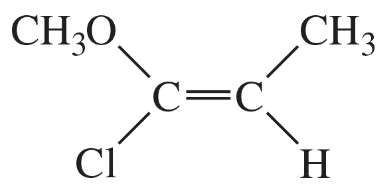An unknown compound has the molecular formula C9H11Br. Its proton NMR spectrum shows the following absorptions:
singlet, δ7.1, integral 44 mm
singlet, δ2.3, integral 130 mm
singlet, δ2.2, integral 67 mm
Propose a structure for this compound.

 Verified step by step guidance
Verified step by step guidance Verified video answer for a similar problem:
Verified video answer for a similar problem:

